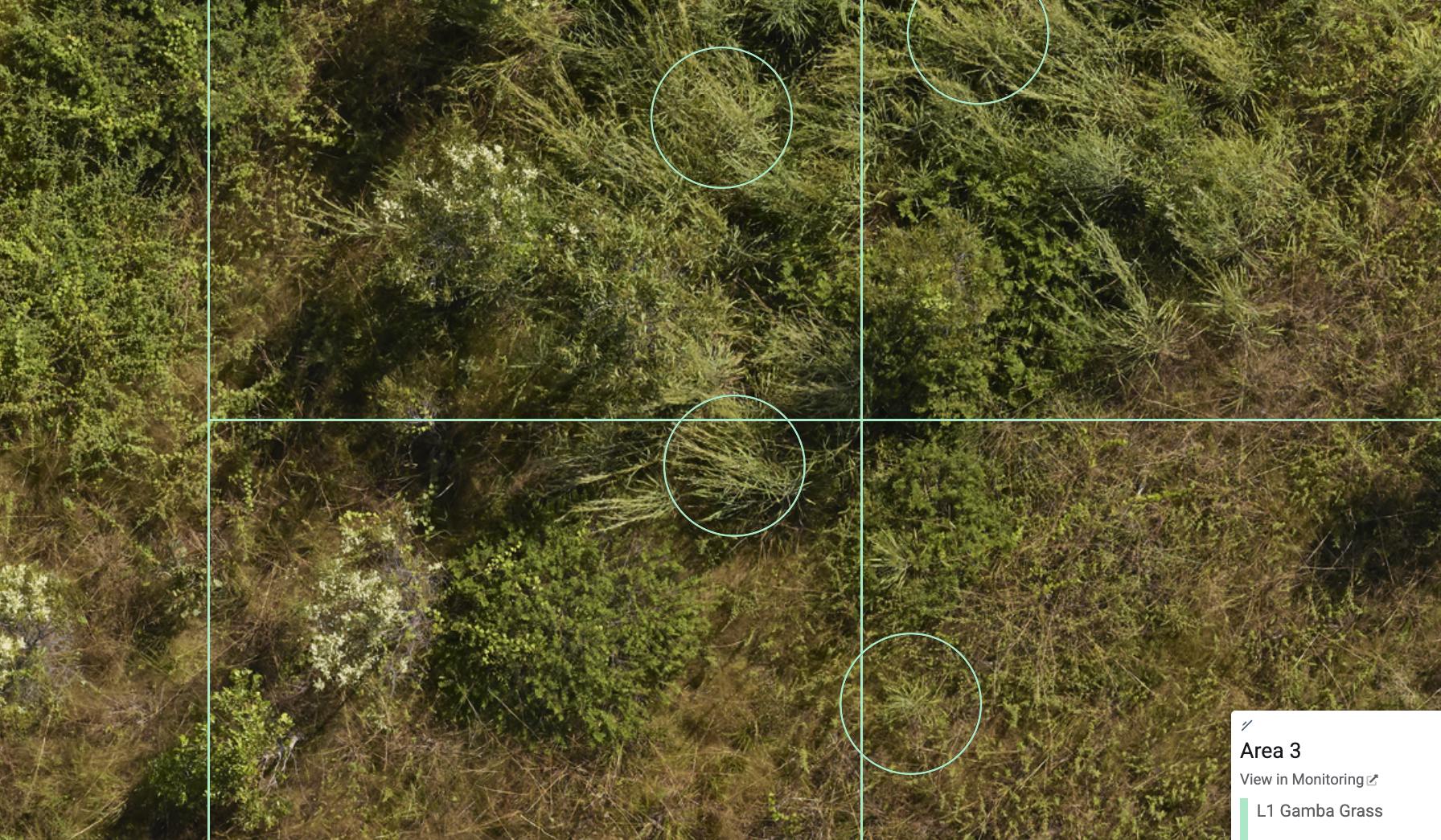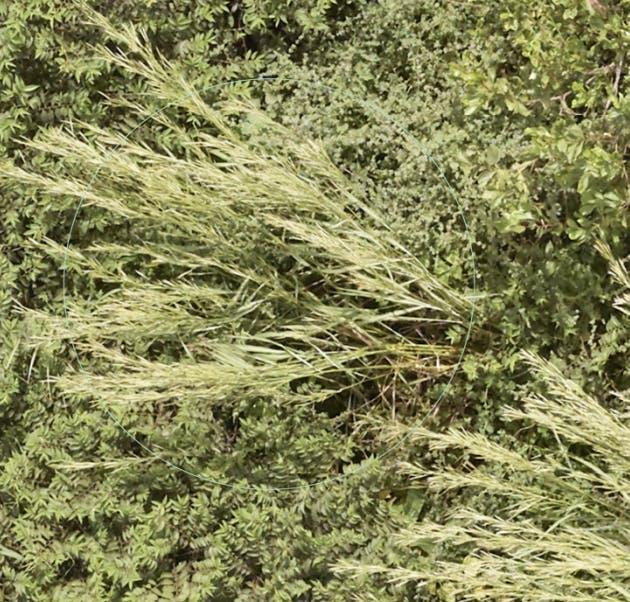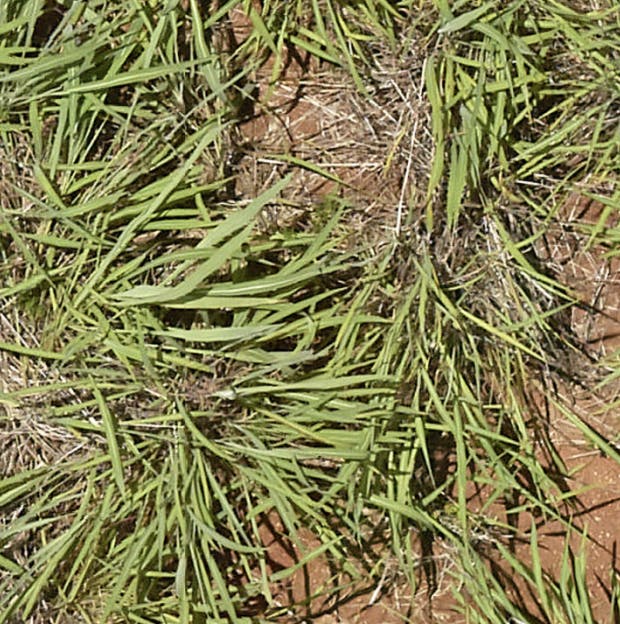Digitising a Smarter Rehabilitation Strategy

A Pasture Species Gone Rogue
A mine site is grappling with a critical challenge, one seeded nearly five decades ago. In the 1970s, Gamba Grass was introduced as a pasture trial,but despite being deemed a failure for grazing, the species quietly persisted. Today, it has become one of the region’s most aggressive threats to biodiversity, ecosystem stability, and mine closure success. Gamba (Andropogon Gayanus), a tall African perennial, grows up to 4 meters tall, forms dense tussocks, and is now classified as a Category 3 restricted invasive plant under the Biosecurity Act 2014. By law, landholders must take all reasonable and practical steps to minimise its spread.
The impact?
• Outcompetes native vegetation
• Fuels fires that destroy entire overstorey ecosystems • Regrows faster than it can be suppressed
• Spreads via humans, machinery, wind, and flame
The longer it’s left unchecked, the harder, and more expensive it is to contain.
Challenge: Seeing the Unseeable
By deploying ultra-high-resolution colour imagery across test zones, the team has achieved breakthrough visibility:
1. Where Gamba is
2. Where it isn’t
3. Where it’s starting to spread
This difference matters. Especially knowing where Gamba is not present on site…
Not only does it enable early intervention, but it also helps build a case for revisiting closure criteria thresholds with regulators, grounded in data, not assumption.
With a more accurate, mapped building-block level of the gamba spread, the site can:
• Understand severity of Gamba infestations
• Track high-risk zones management over time
• Target control activities more efficiently at scale
• Demonstrate progress with audit-grade clarity
Lessons & Leverage
Had these capabilities been integrated earlier in the mine lifecycle, the site would likely be in a very different position today. The spread of Gamba could have been tracked and treated proactively, rather than retrospectively. The infestations could have been identified sooner, and compliance reports would have been grounded in site-wide evidence, not extrapolated from analogue plots or limited visual surveys.
But this moment isn’t about missed opportunities - it’s about what’s still achievable

Figure 1. Flowering Gamba Grass detection.

Figure 2. Non-flowering Gamba Grass detection
There’s a strong case for integrating the Dendra Platform and imagery workflows into the site’s rehabilitation strategy. This is not just about detecting Gamba, it’s about shifting the entire compliance framework into a more robust, digital first, data-driven approach. This is more than a point solution for Gamba.
The Dendra Platform enables:
• Species detection across native and invasive flora
• Vegetation health monitoring using multispectral (MSP) and RGB together
• Erosion and slope risk analysis • Landform change modelling
• Feral animal tracking
• Spatial, spectral and temporal change tracking
Future Digital Compliance
Had Dendra’s approach been adopted earlier in the mine’s lifecycle, the Gamba outbreak could have been managed more proactively, with fewer blind spots, and lower costs. This isn’t about missed chances; It’s about seizing a turning point.
Digital assurance through colour and multispectral imagery offers verifiable, regulator-ready insights. It’s not just about presence/absence mapping but layered intelligence that tracks time-series trends, spatial context, and species-tagged output, all auditable and designed for regulatory scrutiny. This transparency transforms complexity into a clear, actionable roadmap.
By capturing colour and MSP imagery simultaneously, the combined datasets power multiple outputs, enabling adaptive, year-on-year progress tracking. Instead of static field calendars, sites can respond to what’s happening on the ground now, whether it’s an identified Gamba resurgence, or feral fauna getting too comfortable. Rehabilitation becomes measurable in movement, not just milestones.
Most importantly, the investment compounds. Every Dendra flyover becomes a reusable asset, informing rehabilitation, shaping future approvals, and building trust. This is how sites can reduce compliance costs, accelerate approvals, and sustain long-term regulatory confidence not through guesswork, but through a smarter, digital-first compliance strategy.
Resolution: A Smarter Path to Relinquishment
Achieving total eradication of Gamba may be an unrealistic expectation, and regulators might accept this. However, what they cannot accept is the uncertainty, inaction, or insufficient evidence. Now is the time to shift from merely managing a risk to owning a strategy.
By integrating site-wide ultra-high-resolution mapping into the closure strategy, the site can:
• Set new standards in environmental accountability
• Back every report with layered, auditable proof
• Reduce ambiguity in regulator dialogue • Increase chances of negotiated, data-justified thresholds
• Accelerate mine relinquishment by years, not months
In doing so, the site won’t just control Gamba, it will redefine what digital compliance will look like in modern mining.